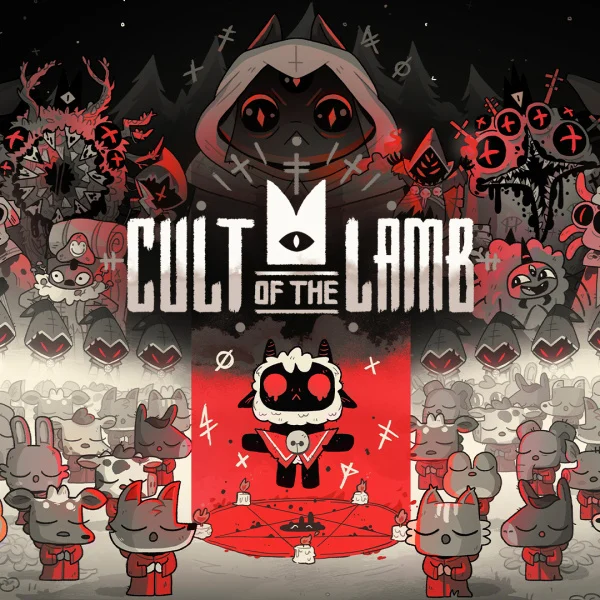
I quite like the idea of being in a cult. It’s basically a club on steroids. You go there, hang out, everyone’s on the same page, and maybe get a uniform and a cool tattoo. Then someone steps out of line, they get sacrificed and you watch your friend eat them. Maybe not, but such is life in Cult of the Lamb.
It all goes quite badly for the little lamb but thankfully, after a horrible death, is resurrected by The One Who Waits. He’s trapped in chains by other deities, and your job – as part of the deal of the resurrection – is to start a cult, get stronger and go and kill those that imprison him.
‘How badly could it go?’ I ask myself, given that the game is played with a lovely, cute art style. The answer is very bad. At least thematically, as Cult of the Lamb is a joy to play. In a game of two halves, your introduction to what seems to be the main gameplay look is a basic (by comparable game standards) roguelike hack-and-slash, working through worlds and getting stronger each run.
But each run gets you some resources, and/or followers/people to rescue. Once rescued, they are then converted (or coerced) to join your cult, and the second half of the game becomes clear. Cult of the Lamb requires some base management. You’re tasked with putting your cult to work, searching for food, mining rock or gathering wood, or just good old-fashioned worshipping you. The complexities then come to light.

Cult of the Lamb throws mechanics at you quite early on, so don’t start it when you’re tired. However, you quickly become familiar as they use a lot of the same approach. Get wood and stone to build stuff. Get devotion points to learn more things for your cult to do and be able to build. Every day (in-game), do a sermon, which grants other bonuses, and so on. Other areas become unlockable too, like a fishing village, which opens up even more. The premise is simple – collect things, unlock things. And different things unlock other things.
There are some options to configure your cult too, and decide how you want to run it – often being an option of having two choices, but choose carefully as once you do down a route, you can’t go back. I elected to rule with an iron fist, which went great until everyone got a bit upset at my strict regime and I had to start sacrificing folks. They didn’t like that too much, so we set about ‘ascending’ them. Problem solved.
Once you’ve exhausted all in-base options, it’s time to go back on a run, or crusade as the game refers to it. They’re pretty short, about 7/8 minutes to complete a crusade, and then it’s back to the base building. You start with a random weapon and can get tarot cards to buff your runs in various ways. These add some variety, but ultimate runs are a case of smack stuff, dodge, or use an ultimate weapon – there’s not masses of variety in the combat and certainly doesn’t hold up to the likes of Hades, but then it’s just one part of the entire package for Cult of the Lamb.
For those that like customising, you can really kit out your followers as you’d like. Choose from a selection of adorable animals, give them a name if you want, and then set them about doing your business. Like all good games where you name the characters after your mates, they typically befall a sad fate, so maybe not one to play when your friends are round.
Cult of the Lamb takes enough tried and tested gameplay loops, and throws it all together in a way which should be overwhelming but somehow works. It doesn’t really overstay its welcome or seems never-ending as some roguelikes do, and that actually works towards its favour.
Reviewed on PS5


Leave a Reply